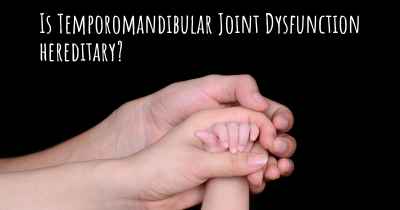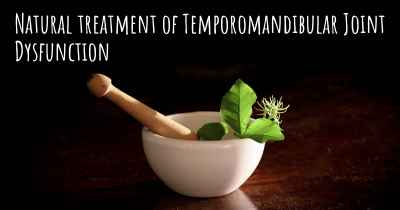Living with Temporomandibular Joint Dysfunction. How to live with Temporomandibular Joint Dysfunction?
Can you be happy living with Temporomandibular Joint Dysfunction? What do you have to do to be happy with Temporomandibular Joint Dysfunction? Living with Temporomandibular Joint Dysfunction can be difficult, but you have to fight to try to be happy. Have a look at things that other people have done to be happy with Temporomandibular Joint Dysfunction

Living with Temporomandibular Joint Dysfunction (TMJ)
Temporomandibular Joint Dysfunction (TMJ) is a condition that affects the jaw joint and surrounding muscles, causing pain and discomfort. It can significantly impact your daily life, but with proper management and lifestyle adjustments, you can improve your quality of life and minimize the symptoms. Here are some tips on how to live with TMJ:
1. Seek Professional Help
If you suspect you have TMJ, it is crucial to consult a healthcare professional, such as a dentist or an oral and maxillofacial specialist. They can diagnose your condition and provide appropriate treatment options tailored to your specific needs.
2. Practice Good Oral Hygiene
Maintaining good oral hygiene is essential for managing TMJ. Brush your teeth twice a day, floss regularly, and visit your dentist for routine check-ups. Proper oral care can help prevent dental issues that may exacerbate TMJ symptoms.
3. Apply Heat or Cold Therapy
Applying heat or cold packs to the affected area can help alleviate TMJ pain and reduce inflammation. Experiment with both heat and cold to see which provides the most relief for you. Remember to wrap the pack in a cloth to protect your skin from direct contact.
4. Practice Relaxation Techniques
Stress and anxiety can worsen TMJ symptoms. Engaging in relaxation techniques, such as deep breathing exercises, meditation, or yoga, can help reduce stress levels and promote overall well-being. Incorporate these practices into your daily routine to manage TMJ-related stress.
5. Avoid Trigger Foods
Some foods can aggravate TMJ symptoms, such as hard or chewy foods, sticky candies, and excessive caffeine. Identify your trigger foods and try to avoid them. Opt for softer, easier-to-chew alternatives to minimize strain on your jaw joint.
6. Practice Jaw Exercises
Performing gentle jaw exercises can help improve jaw mobility and reduce TMJ discomfort. Consult with a healthcare professional or physical therapist to learn specific exercises that target your jaw muscles. Be cautious not to overexert your jaw during these exercises.
7. Use a Splint or Mouthguard
A splint or mouthguard can help alleviate TMJ symptoms by providing support and reducing jaw clenching or teeth grinding. Your dentist can recommend the most suitable type of oral appliance for your condition. Ensure it fits properly and wear it as instructed.
8. Avoid Excessive Jaw Movements
Avoid activities that require excessive jaw movements, such as chewing gum, biting nails, or opening your mouth wide. These actions can strain the jaw joint and exacerbate TMJ symptoms. Be mindful of your jaw movements throughout the day.
9. Maintain Good Posture
Proper posture can help alleviate TMJ pain. Avoid slouching and ensure your head, neck, and spine are aligned. Use ergonomic chairs and pillows to support your posture, especially when sitting for extended periods.
10. Get Adequate Sleep
Getting enough sleep is crucial for overall health and managing TMJ symptoms. Establish a regular sleep routine, create a comfortable sleep environment, and practice relaxation techniques before bed to promote restful sleep.
11. Consider Physical Therapy
In some cases, physical therapy may be beneficial for TMJ management. A physical therapist can guide you through exercises, stretches, and techniques to improve jaw function and reduce pain. Consult with your healthcare professional to determine if physical therapy is suitable for you.
12. Educate Yourself
Learn more about TMJ to better understand your condition. Knowledge empowers you to make informed decisions about your treatment and lifestyle adjustments. Stay updated on the latest research and seek support from reputable sources or TMJ support groups.
Living with TMJ can be challenging, but by implementing these strategies and working closely with healthcare professionals, you can effectively manage your symptoms and improve your quality of life.








